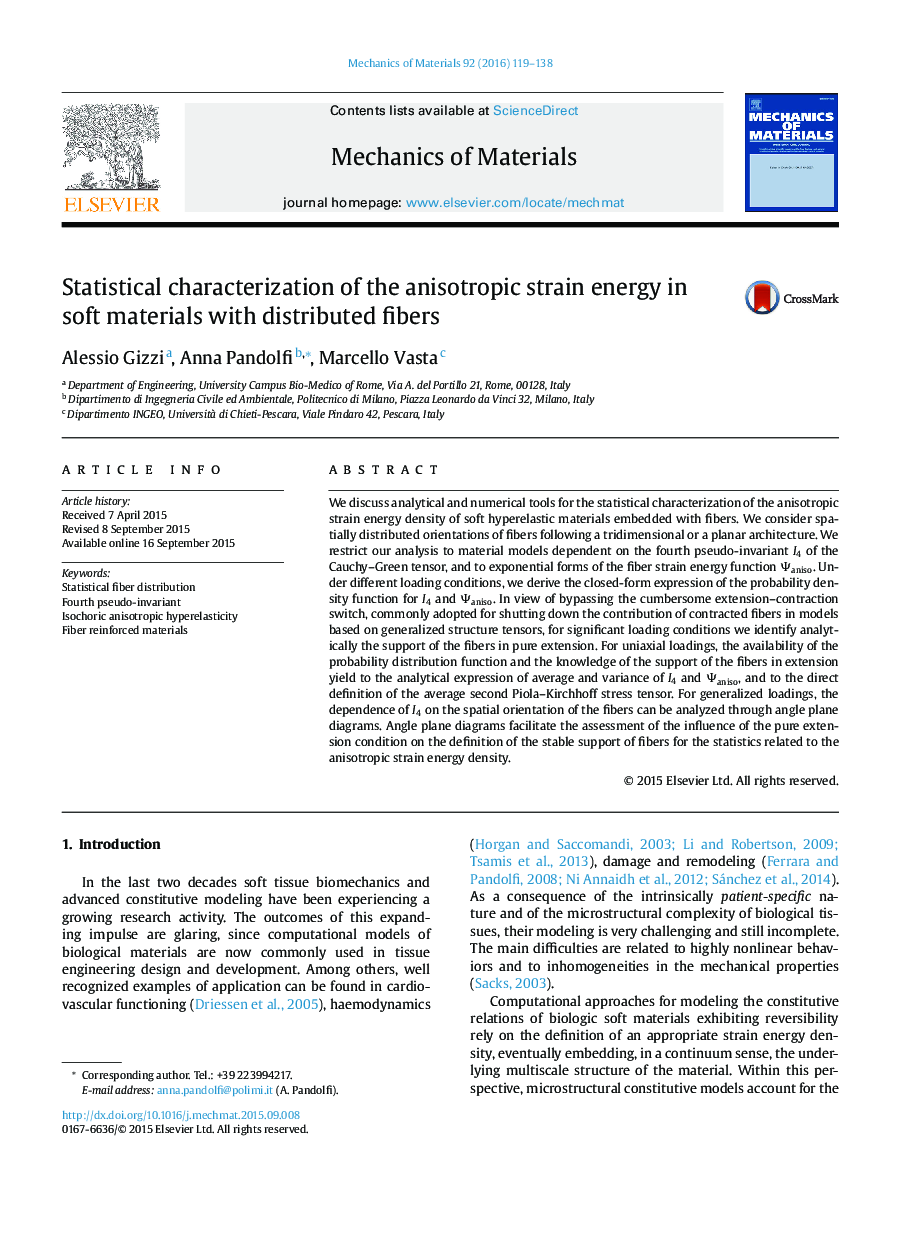| Article ID | Journal | Published Year | Pages | File Type |
|---|---|---|---|---|
| 797485 | Mechanics of Materials | 2016 | 20 Pages |
•Discuss the statistical characterization of the anisotropic strain energy density of elastic materials embedded with fibers.•Derive in analytical form the probability density function of the fourth invariant of the anisotropic strain energy density.•Identify analytically the support of the fibers in pure extension under uniaxial loading.•Introduce angle plane diagrams to visualize the dependence of the fourth invariant on the spatial orientation of the fibers
We discuss analytical and numerical tools for the statistical characterization of the anisotropic strain energy density of soft hyperelastic materials embedded with fibers. We consider spatially distributed orientations of fibers following a tridimensional or a planar architecture. We restrict our analysis to material models dependent on the fourth pseudo-invariant I4 of the Cauchy–Green tensor, and to exponential forms of the fiber strain energy function Ψaniso. Under different loading conditions, we derive the closed-form expression of the probability density function for I4 and Ψaniso. In view of bypassing the cumbersome extension–contraction switch, commonly adopted for shutting down the contribution of contracted fibers in models based on generalized structure tensors, for significant loading conditions we identify analytically the support of the fibers in pure extension. For uniaxial loadings, the availability of the probability distribution function and the knowledge of the support of the fibers in extension yield to the analytical expression of average and variance of I4 and Ψaniso, and to the direct definition of the average second Piola–Kirchhoff stress tensor. For generalized loadings, the dependence of I4 on the spatial orientation of the fibers can be analyzed through angle plane diagrams. Angle plane diagrams facilitate the assessment of the influence of the pure extension condition on the definition of the stable support of fibers for the statistics related to the anisotropic strain energy density.
Graphical abstractFigure optionsDownload full-size imageDownload as PowerPoint slide
